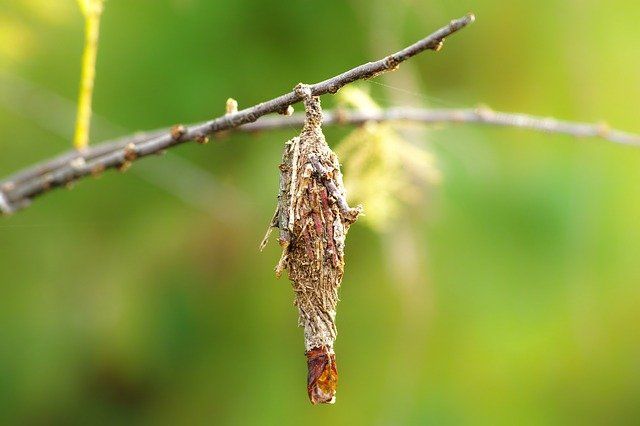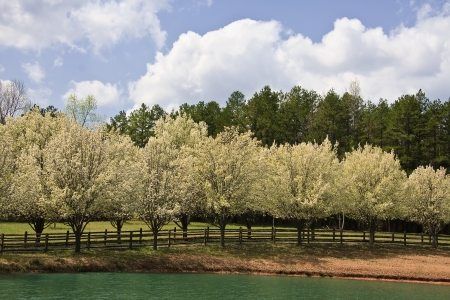How to Identify Hazardous Trees on Your Property Before Storm Season

With storm season lurking around the corner, ensuring the safety of your home and property becomes a top priority. One of the most overlooked risks during a storm is hazardous trees. Trees that seem structurally sound can pose a significant threat when heavy winds and rains arrive. Acting early can save you from dealing with damage to your home, vehicles, or endangering your family’s safety.
This blog will help you identify warning signs of problematic trees and explain why professional guidance is vital to protecting your property.
Why Identifying Hazardous Trees Matters
Trees enhance property value, provide shade, and contribute to your home’s curb appeal, but they can also become liabilities. During high winds or torrential rains, a weakened tree may fall, causing damage or injury. Furthermore, damaged or falling trees can be costly to remove in emergency storm situations, compared to proactive maintenance.
Taking preventive action today will save time, money, and potential heartbreak down the road.
Signs of a Hazardous Tree
Homeowners should regularly inspect their trees for these warning signs. If you notice any of the following, it’s time to take action.
1. Leaning Trunks
A tree leaning at an angle can be a natural growth pattern, but it may also hint at weakened roots or structural imbalance. If a lean appears suddenly or progressively worsens, the tree likely poses a danger. Pay close attention to trees leaning over your home, driveway, or utility lines.
2. Cracked or Split Trunks
Cracks in the trunk, especially large ones, can point to urgent structural issues. A trunk split down its center indicates that stress has compromised the tree’s stability and increases the likelihood of the tree splitting or falling.
3. Dead or Hanging Branches
Deadwood can become brittle over time and is prone to snapping under pressure, even without intense weather conditions. Large, dangling branches pose an immediate threat, especially if positioned above your house or frequently used areas like decks or pathways.
4. Root Problems
Roots anchor trees to the ground, making them a critical part of structural stability. Look out for:
- Bare roots appearing above the soil
- Cracked or lifted ground around the base
- Signs of fungus or rot near the roots
Compromised roots drastically increase the risk of the tree toppling during storms.
5. Decay or Hollow Spots
A tree with visible hollows or decay pockets is at risk of falling. While decay works slowly, it weakens the wood over time. Use a mallet to gently tap the trunk; if the sound is hollow, internal decay may be present.
6. Pests and Diseases
Watch for infestations of pests like termites or beetles. Other indicators of disease include discolored leaves, cankers on the bark, and mushrooms growing at the tree’s base. A diseased tree loses its structural integrity, posing significant risks when storms hit.
Steps for Homeowners to Evaluate Their Trees
Here are some actionable tips to assess your trees for potential hazards:
Step 1: Perform a Visual Inspection
Start by scanning your property and looking for the danger signs mentioned above. Use binoculars to examine branches in taller trees. Evaluate your trees periodically, especially after bouts of heavy winds or rainfall.
Step 2: Check the Surrounding Areas
Assess the area surrounding each tree. Are roots pushing into sidewalks or foundation walls? Do the branches hang dangerously close to power lines? These factors elevate risk and may require immediate attention.
Step 3: Lightly Test for Stability
Tread carefully while testing smaller trees. Gently rock a tree at its base; excessive movement could indicate root instability.
Step 4: Monitor Growth
Trees experiencing uneven growth, such as branches clustering on one side, can become imbalanced over time, which can lead to breaking or tipping, especially during high winds.
Why You Should Consult a Certified Arborist
While it’s beneficial for homeowners to carry out initial assessments, relying on professional arborists makes sure that things are done correctly. Certified arborists have specialized tools and training to assess tree health and determine the best course of action. They can also safely perform intricate removals or pruning that minimizes potential hazards.
Benefits of Hiring Professional Arborists:
- Advanced Assessment Tools: Professionals use technology to inspect internal decay or unstable root systems.
- Tree Risk Mitigation: Arborists know how to strategically trim branches to prevent imbalances while maintaining tree health.
- Regulations Compliance: Experts follow local, state, and national safety standards for safe tree management.
Getting Your Property Storm-Season-Ready
Once you’ve identified any hazardous trees, act immediately. Be proactive by scheduling pruning, removal, or consultations before storms arrive. Also, consider routine maintenance after the storm season ends to keep your trees in good condition.
Proactive tree care, paired with expert assistance, ensures that your property remains safe year-round. Don’t wait for the next heavy storm to reveal weaknesses that you could have addressed sooner!
What are the most common signs that a tree is a falling risk during storms?
Warning signs include noticeable leaning, cracked trunks, dead or hanging branches, exposed roots, and signs of decay like fungus at the tree’s base. If you notice any of these, consult a certified arborist immediately.
How can I prepare my trees before storm season?
Make sure that any dead or weakened branches are trimmed, monitor for signs of disease or pests, and remove dangerous leaning trees. An arborist can help prioritize actions based on risks.

Tim Costley
Tim Costley is the President of Superior Arbor Management, Inc. He has achieved the ISA Arborist Certification to provide the best possible tree care for S.A.M.’s customers.
*ISA Certified Arborist #SO-1925A
*ISA Tree Risk Assessment Qualification (TRAQ)
*ASCA (American Society of Consulting Arborist) Member



